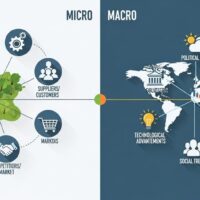The Impact of Trump’s Tariffs on Global Trade
When discussing trade policies in recent history, one cannot overlook the significance of Trump’s tariffs. The move not only sent shockwaves through the U.S. economy but also had a profound impact on global trade. This blog post will delve into the ramifications of these tariffs, exploring their effects on various sectors and regions across the world.
Understanding the Rationale Behind the Tariffs
To comprehend the full scope of Trump’s tariffs, it’s essential to first understand why they were implemented. The Trump administration cited several reasons for imposing these tariffs, including:
- Reducing Trade Deficits: One of the primary objectives was to reduce the United States’ trade deficits with countries like China and the European Union. Trump believed that the imbalance in trade was harmful to the U.S. economy.
- Protecting Domestic Industries: By imposing tariffs on imports, the administration aimed to protect domestic industries from foreign competition, thereby promoting local manufacturing and industries such as steel and aluminum.
- National Security Concerns: The administration claimed that certain imports posed a threat to national security, justifying tariffs under this pretext.
- Pressuring Trade Partners: The tariffs were also a strategic tool to pressure trade partners into negotiating better trade deals for the United States.
Immediate Economic Repercussions
The imposition of tariffs had immediate and noticeable effects on the global economy:
- Increased Costs for Consumers and Businesses: One of the most direct impacts was an increase in costs for both consumers and businesses. With tariffs raising the price of imported goods, companies that relied on these materials found themselves facing higher expenses, often passing these costs onto consumers.
- Retaliatory Tariffs: In response to the U.S. tariffs, several countries implemented retaliatory tariffs, further disrupting international trade. This tit-for-tat strategy strained relations and increased the cost burden on both sides.
Sector-Specific Impacts
The effects of Trump’s tariffs were not uniform across all sectors. Certain industries experienced more pronounced impacts:
Agriculture
The agricultural sector found itself in a precarious position due to the tariffs:
- Loss of Export Markets: As countries retaliated with their tariffs, American farmers faced reduced demand from foreign markets, especially in China, which had been a significant importer of U.S. agricultural products.
- Price Fluctuations: Prices for commodities such as soybeans and pork experienced volatility, unsettling farmers who relied on stable prices to plan their operations.
Manufacturing
Manufacturing, another cornerstone of Trump’s economic strategy, faced its set of challenges:
- Increased Production Costs: Tariffs on raw materials like steel and aluminum led to higher costs for manufacturers, impacting everything from automotive to electronics industries.
- Supply Chain Disruptions: The new trade barriers created unforeseen bottlenecks in the supply chain, challenging companies to adapt swiftly to maintain production timelines.
Consumer Goods
The tariffs also extended their reach to consumer goods:
- Price Hikes: With higher import costs, consumers began to see increased prices for everyday items, from electronics to clothing.
- Shift in Spending Patterns: As prices rose, consumer behavior shifted, with many opting for cheaper alternatives or delaying purchases altogether.
Global Trade Relations
While the internal repercussions were significant, the global ramifications of Trump’s tariffs were equally noteworthy:
Trade Tensions with China
China, as one of the primary targets of the tariffs, found itself in a heated trade war with the United States. This conflict had several dimensions:
- Escalating Tariff Battles: The U.S. and China engaged in multiple rounds of tariff imposition, affecting hundreds of billions of dollars in trade goods.
- Global Supply Chain Adjustments: Companies began rerouting supply chains to mitigate the excessive costs from tariffs, leading to a reevaluation of global manufacturing hubs.
Impact on European Trade
The European Union also witnessed the repercussions of these tariffs:
- Strained Alliances: The tariffs caused friction between traditional allies, challenging the cohesiveness of international trade partnerships such as the Transatlantic Trade and Investment Partnership (TTIP).
- Search for Alternatives: The EU, along with other trade entities, explored new trade partnerships to compensate for the altered trade dynamics with the U.S.
Policy Reassessment and Adaptation
In the face of increased tariffs and trade wars, both businesses and governments had to reassess their strategies:
Corporate Strategy Shifts
Companies across industries recalibrated their approaches to manage the uncertainty created by tariffs:
- Localizing Supply Chains: Many companies, to avoid tariffs, began investing in local production facilities or sourcing from alternative countries.
- Pricing Adjustments: Firms adjusted their pricing models, incorporating potential tariff impacts into their long-term financial planning.
Government Policy Adjustments
Governments also made adjustments to mitigate the fallout and reposition their economies:
- Negotiating New Trade Deals: The situation spurred countries to secure new trade agreements, aiming for more stable and predictable trading conditions.
- Reevaluating Tariff Structures: Some governments reconsidered their tariff structures, seeking a balance between protection and opportunity in an increasingly interconnected economy.
The Road Ahead
As we reflect on the enduring impact of Trump’s tariffs, it is crucial to recognize the lessons learned and the path forward for global trade:
Lessons Learned
- Interconnectedness of Global Economies: The ripple effects of tariff policies underscore the deep interconnectedness of global economies and the potential consequences of disrupting these links.
- Importance of Strategic Trade Policies: Crafting trade policies requires a nuanced approach, balancing domestic interests with international responsibilities to foster sustainable economic relationships.
Future Trade Dynamics
Looking ahead, the future of global trade will depend on how nations adapt to these new realities:
- Innovation in Trade Agreements: Future trade dynamics may see more innovative and flexible trade agreements that can quickly adapt to changing global conditions.
- Emphasis on Multilateral Cooperation: Rebuilding trust and fostering multilateral cooperation will be vital in ensuring a resilient global trade system.
Conclusion
Trump’s tariffs marked a significant shift in U.S. trade policy, challenging the norms of international economics and affecting numerous industries worldwide. While the immediate impact has been substantial, future developments will hinge on how governments and businesses respond to these challenges. Understanding the complexities and implications of such policies is essential for navigating the evolving landscape of global trade.









